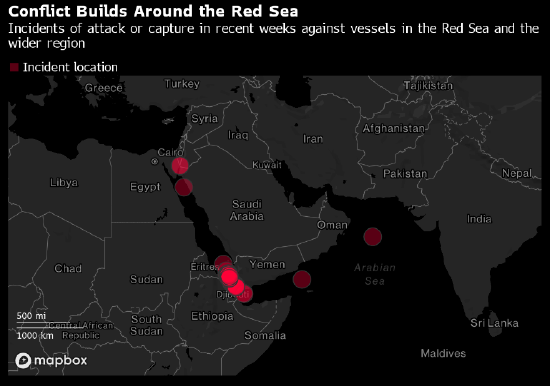Impact of Red Sea Conflict: Unraveling Global Ramifications


Unveiling the Global Repercussions: Impact of the Red Sea Conflict
In recent years, the Red Sea has become a theater of geopolitical tensions and conflicts, with nations vying for influence and control in this strategically crucial region. This article delves into the intricate layers of the Red Sea conflict, examining its impact on global dynamics, security landscapes, and economic stability.
Strategic Significance of the Red Sea: A Global Chokepoint
The Red Sea’s strategic significance as a global chokepoint cannot be overstated. Connecting the Mediterranean Sea to the Indian Ocean, it serves as a vital maritime route for international trade. The escalation of conflicts in this region has direct implications for global shipping lanes and, consequently, the flow of goods, making it imperative to analyze the broader impact on the world economy.
Security Dynamics: Escalation of Regional Tensions
The conflicts in the Red Sea have contributed to the escalation of regional tensions, with countries engaging in proxy wars and strategic maneuvers. The heightened security dynamics pose challenges not only for the nations directly involved but also for neighboring states and the international community. A comprehensive analysis is crucial to understanding the evolving security landscape.
Proxy Conflicts and Alliances: Unraveling Complex Relationships
The Red Sea conflict has become a breeding ground for proxy conflicts and the formation of complex alliances. Various external powers are actively involved in supporting rival factions, contributing to the complexity of relationships in the region. Unraveling these intricate webs of alliances is essential for a nuanced understanding of the conflict’s impact.
Economic Implications: Disruption of Global Trade Routes
As conflicts intensify in the Red Sea, the disruption of global trade routes emerges as a significant economic concern. The region’s role as a key maritime trade route means that any disturbances have a ripple effect on international commerce. A thorough analysis is necessary to gauge the economic implications and navigate potential challenges to global trade stability.
Humanitarian Crisis: Impact on Civilian Populations
The Red Sea conflict has resulted in a humanitarian crisis, with civilian populations bearing the brunt of the hostilities. Displacement, food shortages, and the destruction of essential infrastructure contribute to the suffering of communities. Examining the humanitarian impact is essential for addressing the immediate needs of affected populations and fostering international assistance.
Environmental Concerns: Safeguarding Fragile Ecosystems
Amidst the conflicts, environmental concerns arise as potential casualties. The Red Sea is home to diverse marine ecosystems, and the impact of military activities can lead to environmental degradation. Safeguarding these fragile ecosystems requires attention in any comprehensive analysis of the Red Sea conflict.
Diplomatic Initiatives: Seeking Paths to Resolution
In the face of ongoing conflicts, diplomatic initiatives become crucial for seeking paths to resolution. Regional and international efforts aimed at de-escalation, dialogue, and conflict resolution play a pivotal role in mitigating the impact of the Red Sea conflict. Analyzing these diplomatic initiatives offers insights into potential avenues for peace.
Global Security Ramifications: Beyond Regional Borders
The conflicts in the Red Sea have global security ramifications that extend beyond the immediate region. The potential for spillover effects, involvement of international actors, and the interconnected nature of security threats require a comprehensive analysis. Understanding the broader impact on global security is essential for shaping effective international responses.
Red Sea Conflict Impact: A Detailed Analysis
For a comprehensive analysis of the impact of the Red Sea conflict on global dynamics, security landscapes, and economic stability, refer to Red Sea Conflict Impact. This detailed analysis delves into the multifaceted repercussions of the conflicts in the Red Sea, providing valuable insights for policymakers, scholars, and the public alike.
Conclusion: Navigating Complexities for a Stable Future
As conflicts continue to unfold in the Red Sea, a nuanced understanding of their impact is essential for navigating the complexities of regional and global dynamics. Comprehensive analyses, diplomatic initiatives, and international cooperation are key elements in building a path towards stability, peace, and a secure future for the nations touched by the Red Sea conflict.







